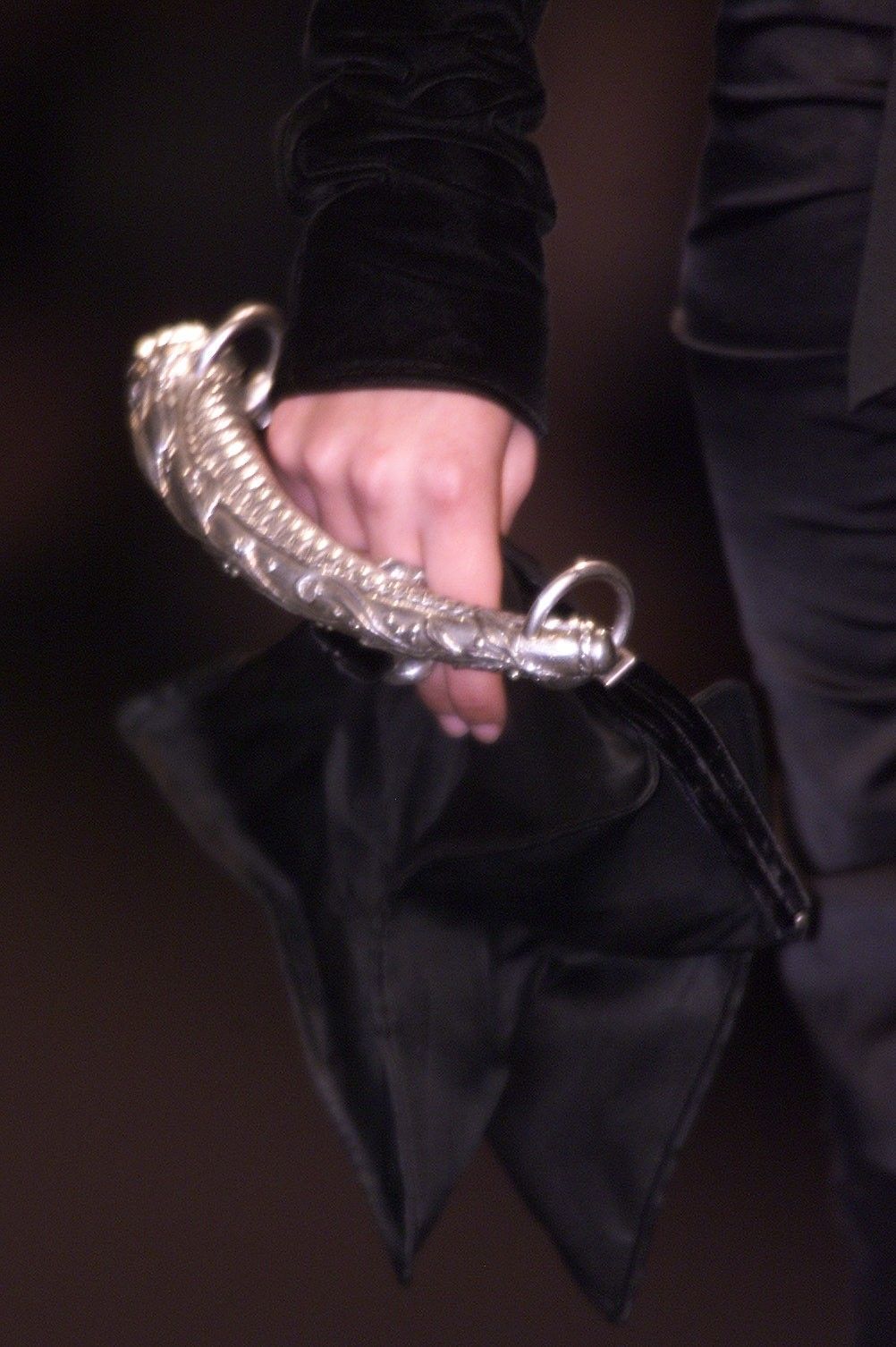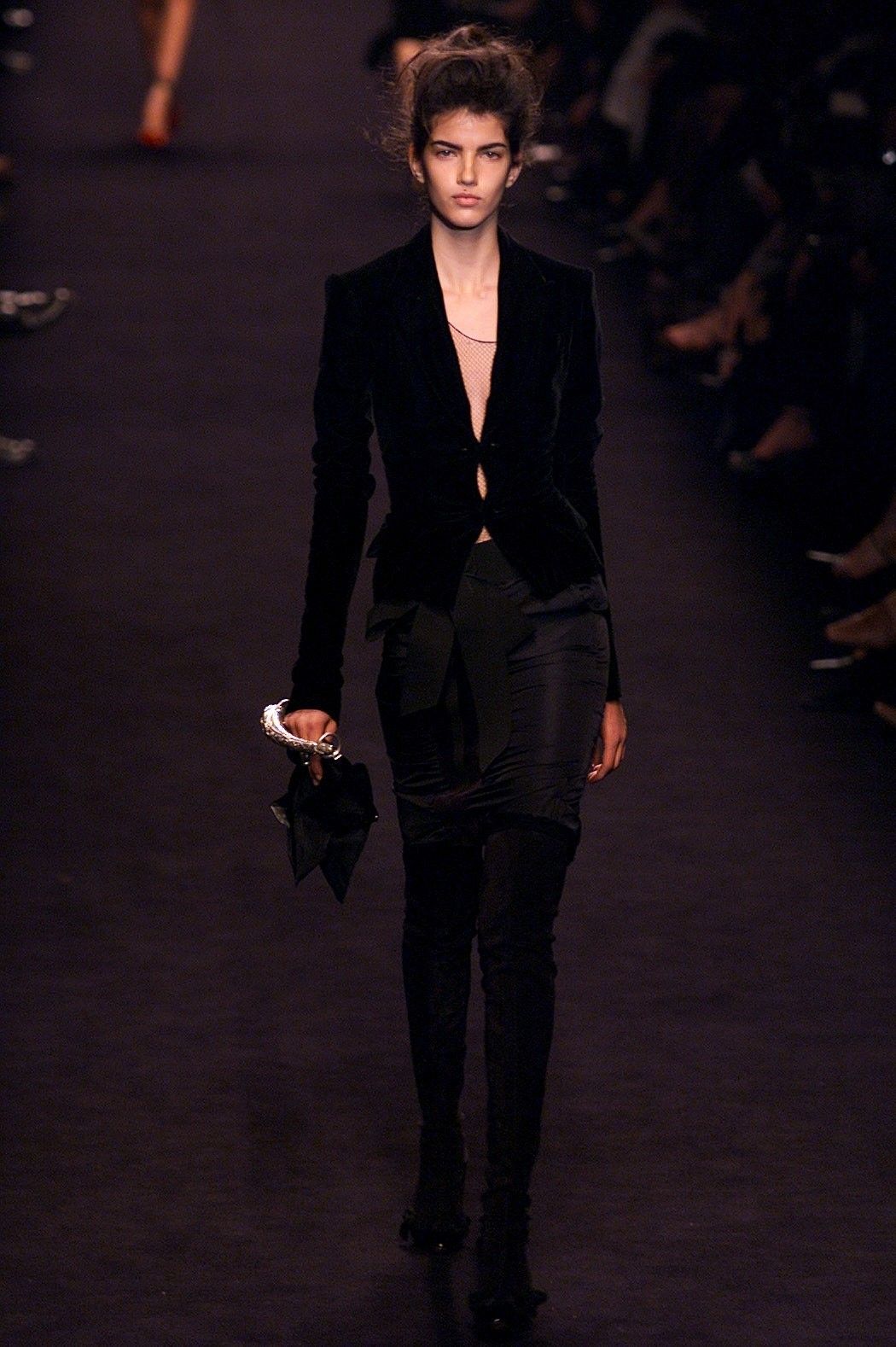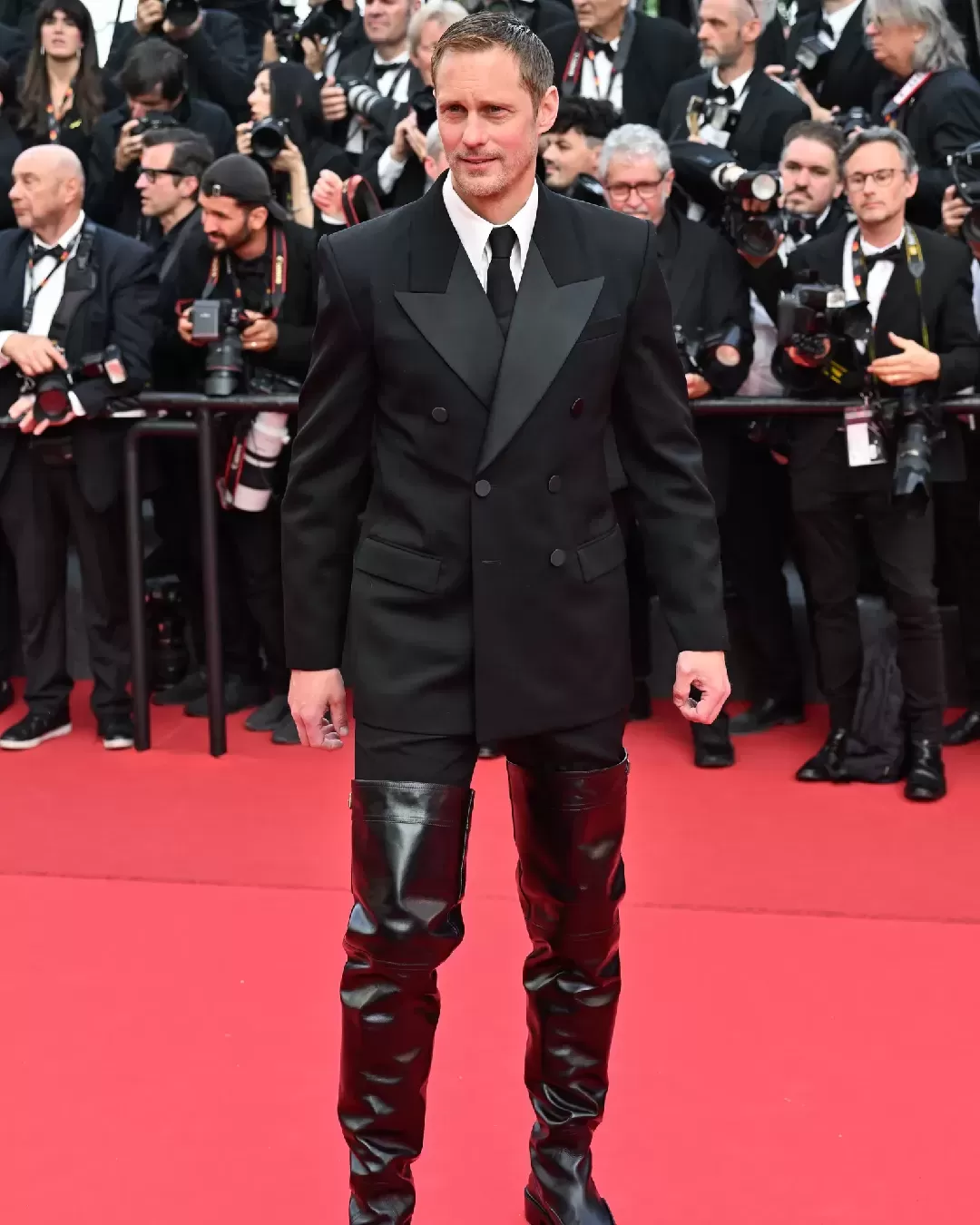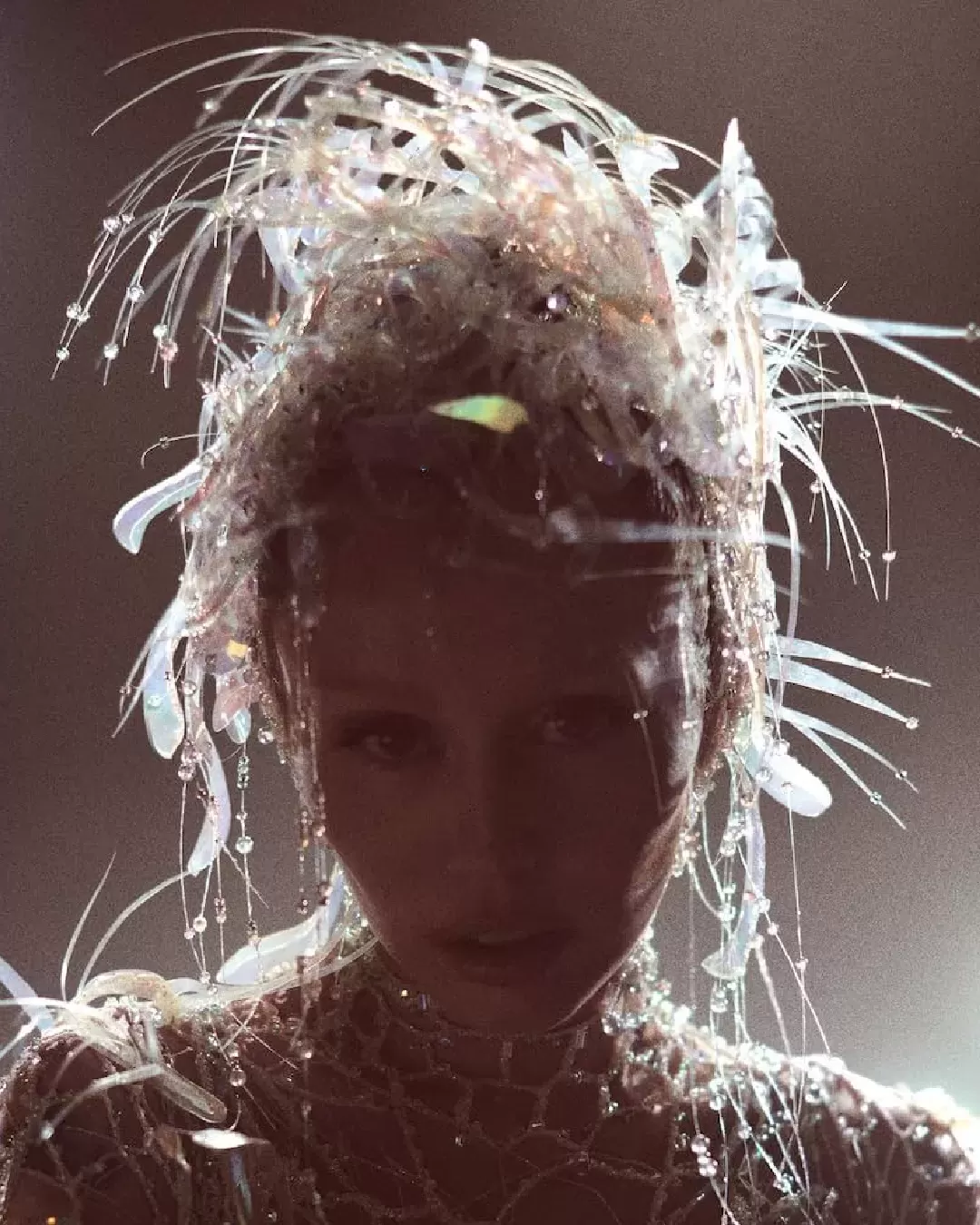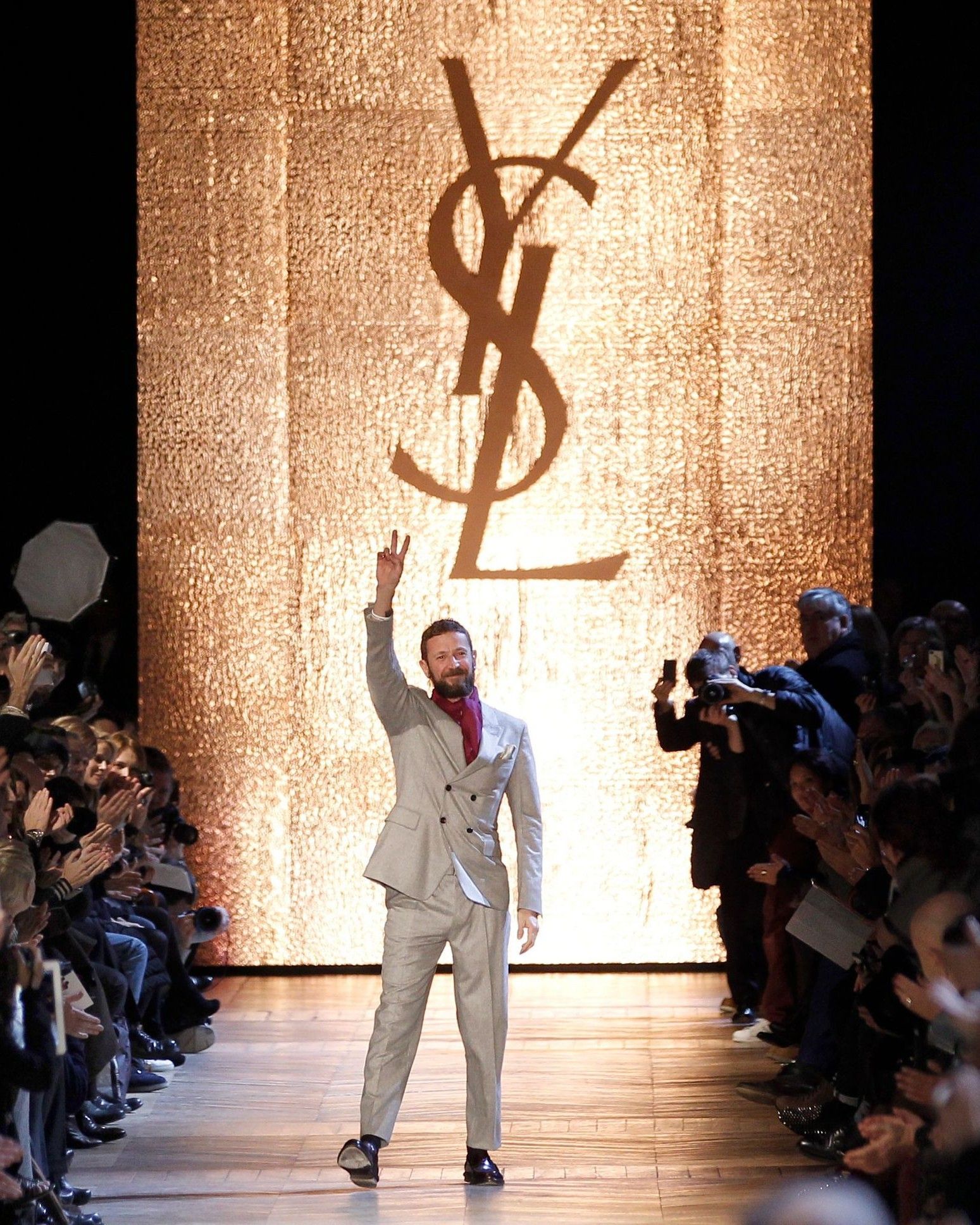
When Stefano Pilati was creative director of Saint Laurent An explorer darker sides of glamour
2009 was the year when The September Issue, a docu film focused on the creation of September's Vogue US, the most important issue for Condé Nast's publishing ecosystem, was presented. In one of the many frames where Anna Wintour is intent on disapproving of the work of employees and contributors, Stefano Pilati appears as he coyly narrates one of his latest collections for Saint Laurent. Pilati, who as a teenager dreamed of being able to wear Fiorucci's clothes, took the reins of the French fashion house in 2004, just after the Tom Ford tenure and acquisition by Gucci Group. After Ford announced his resignation, everyone took it for granted that Pilati would be the heir to YSL. “I was candidate No. 1,” Pilati recalled, “but they were still looking for someone else. Every day there was a new candidate, Hedi Slimane or Alexander McQueen but I didn’t wait for them to tell me yes: I started designing two collections. And, eventually, they gave me the position.”
@bundchenaesthetic #AnnaWintour durante o #preview da coleção de outono/inverno 2007 da #YvesSaintLaurent a comando de #StefanoPilati, bem #TheDevilWearsPrada som original - bündchen aesthetic
Here is the translated text: ```html
Pilati's work at Saint Laurent starts from a very precise assumption: “Saint Laurent has done everything. You enter the YSL archives and feel like he has thought of every idea you could ever imagine. It's intimidating.” Intimidation that, according to the Italian designer, does not seem to have similarly characterized the work of his predecessor, Tom Ford, guilty of somewhat neglecting the great warning sewn onto Monsieur Yves' tuxedos and sahariennes: putting women to the test. When Stefano Pilati arrived at Saint Laurent, he faced a scenario marked by a financial crisis that began in 1993 and three sales transactions: the first to the French pharmaceutical conglomerate Elf Sanofi; the second in 1999 to François Pinault for 1 billion dollars, and the third to the Gucci Group.
In the long interview given to the New York Times, Pilati recalls the words spoken by Tom Ford at the end of 2001: “September 11 marked the end of the '90s. It was a difficult time to relaunch a brand.” Yet, Yves Saint Laurent began to recover when a bag (the Mombasa) and a perfume (Nu) were introduced. “It was rather fascinating for me to observe all this” Pilati recounted between one cigarette and another. “And useful. Everyone was looking for the bag to save us. I said: I'm not a bag designer, but I'll do my part. We came up with the Mombasa.”
However, the journey as creative director at Saint Laurent begins with the SS05 collection, which, departing from the unrelenting sensualism pursued by Tom Ford, divided critics skeptical of the tulip skirts and polka dot prints that could be traced back to an unspecified time between the '50s and '80s: Vanessa Friedman described the cocktail dresses as disastrous, while Suzy Menkes wrote that the skirts "looked like they were for girls in an Easter parade." Only Carine Roitfeld, leading Vogue Paris, saw potential in Pilati's creative direction, featuring one of his polka dot jackets on the February cover. If with the FW05 collection Pilati had already reinterpreted the aesthetic codes of the Jansenist nuns' uniforms in Flemish paintings, with their "clean, perfect, and ironed but rich in detail" fabrics, with the FW06 collection he managed to make tunics worn over skinny pants sexy, sidelining those of tuxedos - “Watching my sisters, I realized how sexy it can be to unbutton something from behind. You need a man to help you do it.”
“Finally something to wear!” wrote Cathy Horyn about the FW07 collection, the one that Anna Wintour viewed with skepticism in The September Issue due to its sparse color palette - Pilati's glamour, however sophisticated, is characterized by a cold rendering. “You know, it's not my winter mood. Colors for me are more of a summer thing,” Pilati explained in his own way. Masculine-cut jackets, rounded coats with raglan sleeves, tuxedo jackets, a cement gray palette that even embraced a fur with chiffon tied at the waist: Pilati knew how to reinterpret Yves Saint Laurent's archive both in its more romantic aspects and by bringing his vision, marked by a constant spatial intelligence traceable in the volumes and silhouettes, even managing to convey a snapshot of the founder's creative journey: the headpieces and nylon dresses worn during the FW07 collection replicated the texture of the crocodile boots that shocked the press in 1960 when Yves lost the role of creative director at Dior.
@the.vintism Is this @ysl F/W 2007 RTW runway coat by @stefanopilati one one of the chicest we have ever had? Yes, it might be. Crafted to perfection in soft grey wool & cashmere felt, the oversized balloon sleeves, the deep V neckline, the invisible button fastening make it a definition of YSL’s Parisian chic. As seen on the legend @gisele in the ad campaign. Psssst… We saw a twin of this coat sold online for over 2000$, while our reserve price may be somewhere around 300
Pilati himself experienced the same kind of treatment when, in 2004, he was criticized by the press for floral prints. “When I was 17, the design director at Nino Cerruti, who was my first mentor, taught me that being too forward means being backward. The most important thing is to be on time.” Although the designer has often joked about his ability to do business, he has always worked together with CEO Valérie Hermann to launch accessories and products with strong mass appeal: in 2005, it was his first Muse bag, in 2008 Muse Two and the padded boots also proposed in the stiletto version. “We live in a world where you should ask yourself: would I spend thousands of dollars on this dress?” he wondered in 2008, on the brink of the financial crisis announced by the media. Part of the solution was addressed with the FW09 collection that transformed Saint Laurent's archival tuxedos into pinstripes or patent leather ensembles, reaching a more mature stage with the FW10 collection where necklaces with gold pendants reproduced from '70s magazines, hats, and capes spoke of protection.
After being excluded from the opening gala for an exhibition on Yves at the Petit Palais by Pierre Bergé himself, Pilati fully reinterprets the sleek and classic aspects of the archive with the FW11 collection, flirting with navy blue and fuchsia ruffles. His continuous digging into the heritage and personal experience of the brand's author leads Pilati to a more dramatic and dark editing with his last collections: with men, he cites the love story between Yves and Jacques de Bascher and his nightlife, transforming military tailored jackets and peacoats into a bondage set à la Robert Mapplethorpe (a sweater even reproduced his iconography of the blades), while with women he plays with wasp waists, leather, and chainmail dresses framed by sleek hair styled by Guido Palau and vampire red lips drawn by Pat McGrath. Pilati, for this last collection, chose the calla lily, a flower adopted by the Romans as a symbol of lust and as a decoration on the tombs of prematurely deceased emperors, walks the YSL runway for the last time. And he leaves, as a creative testament, a very precise overwriting of that universe that has very little golden about it.











































